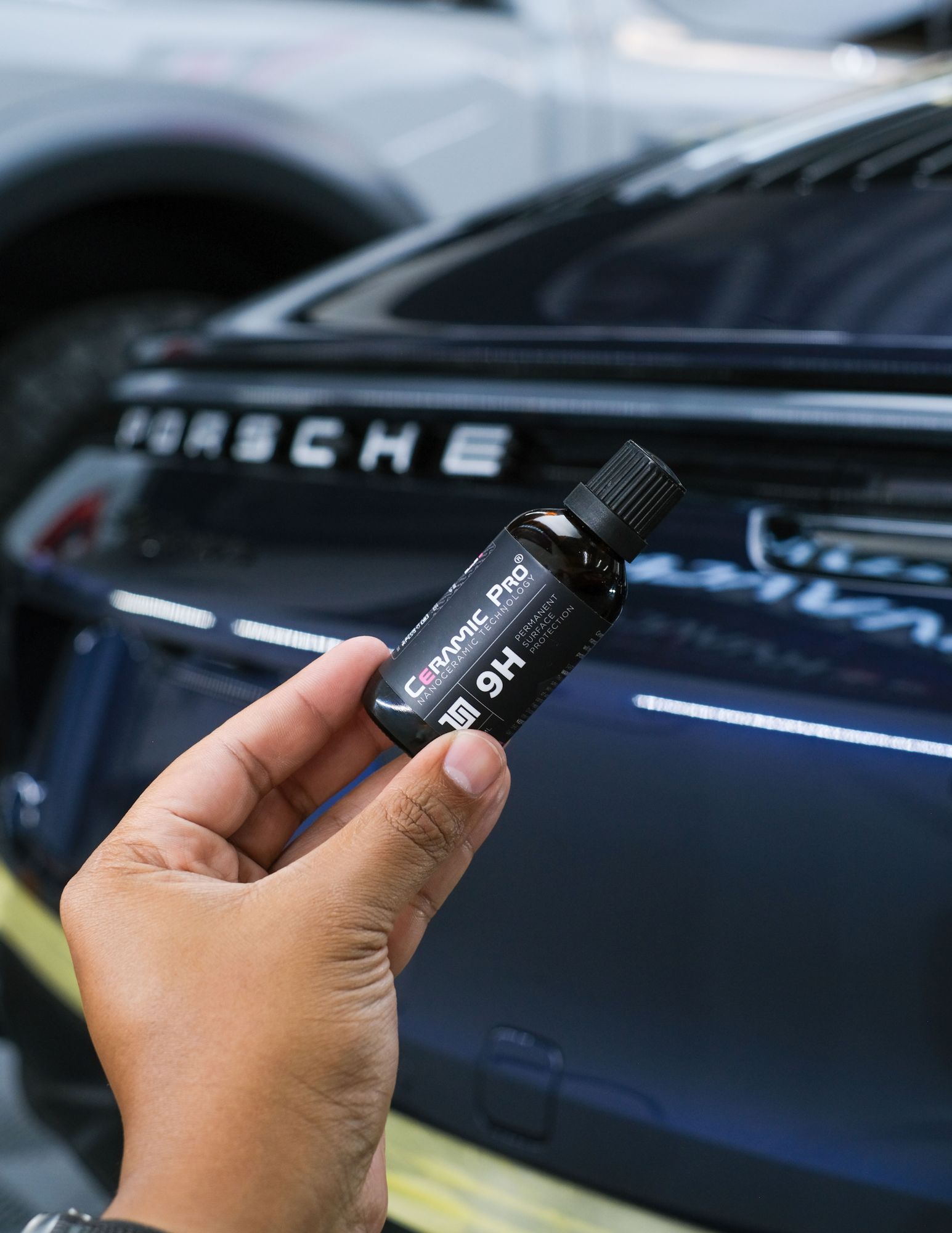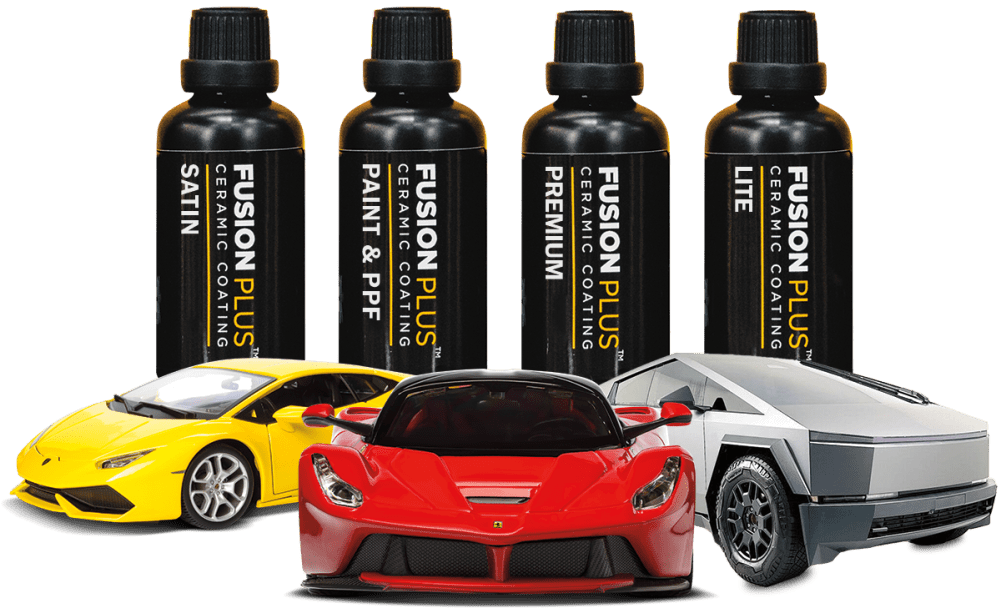How to Apply Ceramic Coating and Achieve Professional Results
How to Apply Ceramic Coating and Achieve Professional Results
Blog Article
Ceramic Layer vs. Standard Wax: Which Offers Better Long-Term Protection?
The dispute between ceramic layers and traditional wax for automobile defense has actually amassed substantial focus amongst vehicle fanatics and experts alike. Ceramic layers flaunt exceptional longevity and resistance to environmental factors, yet the complexity of their application elevates concerns concerning ease of access and practicality.
Review of Ceramic Covering
Ceramic finishing has actually gotten significant popularity among automotive lovers and detailers alike as a result of its sophisticated protective qualities. This ingenious modern technology is made to create a durable, hydrophobic shield over a car's paint surface, dramatically enhancing its resistance to environmental contaminants such as dirt, UV rays, and chemical stains. Unlike standard wax, which supplies a momentary layer of security, ceramic coatings bond at a molecular degree with the paint, offering durable longevity-- typically prolonging beyond two years with proper upkeep.
The application process entails thorough preparation of the automobile's surface area, consisting of cleaning and brightening to guarantee optimal adhesion. When used, the covering cures to create a robust layer that not only includes depth and gloss to the paint but additionally simplifies maintenance. With its hydrophobic buildings, ceramic finishing permits water and dirt to move off even more quickly, decreasing the frequency of laundries and minimizing the risk of swirl marks.
Furthermore, ceramic coverings are readily available in different formulas, permitting individuals to pick items tailored to their details demands and preferences. Overall, ceramic finish stands for a substantial improvement in paint security technology, providing premium performance contrasted to traditional options.
Overview of Typical Wax
Traditionally considered a staple in auto treatment, wax serves as a preferred selection for those looking for a straightforward approach to enhance and secure their lorry's paint - ceramic coating. Automotive wax normally comprises natural active ingredients, such as carnauba, or artificial compounds, designed to create a safety layer externally of the paint. This layer not just enhances the automobile's gloss and radiate but additionally provides a barrier versus ecological pollutants
The application of wax is usually straightforward, making it accessible for both professionals and DIY enthusiasts. It can be applied by hand or machine, permitting for flexibility in the describing procedure. As soon as applied, wax calls for a treating duration, after which it solidifies to form a protective shell. Wax is additionally understood for its capacity to repel water, promoting a beading result that aids in the prevention of water spots and corrosion.
Nonetheless, while wax works for enhancing the visual charm of a lorry, it is necessary to keep in mind that the defense it offers might demand much more constant reapplication contrasted to alternative products, such as ceramic layers. In general, typical wax remains a favored alternative for those focusing on simplicity of use and prompt aesthetic enhancement.
Durability and Long Life Contrast
While both ceramic coatings and conventional wax deal safety benefits for vehicle paint, their toughness and durability vary considerably. Typical wax, usually made from all-natural carnauba or synthetic polymers, generally provides a protective layer that lasts around three to six months. This reasonably brief lifespan demands routine reapplication to keep optimum protection.
On the other hand, ceramic coverings are crafted from innovative nanotechnology, creating a covalent bond with the paint surface. This causes a durable, hydrophobic layer that can withstand for 2 to five years, depending on the product and ecological problems. The superior resilience of ceramic finishes is connected to their chemical structure, which supplies boosted see this page resistance to scrapes, UV rays, and oxidation.

Defense Versus Ecological Aspects
Safeguarding a lorry's paint from environmental elements is crucial for preserving its appearance and value with time. Automobiles are frequently subjected to a selection of elements, including UV rays, bird droppings, tree sap, acid rainfall, and roadway grime, all of which can endanger the honesty of the paintwork.
Ceramic finishings give a robust defense versus these ecological aggressors. Unlike standard wax, which can weaken rapidly under UV exposure, ceramic layers form a resilient, hydrophobic layer that withstands the unsafe effects of sunlight and environmental contaminants. This innovative technology creates a chemical bond with the car's surface area, using superior protection that lasts for many years, also in extreme problems.
In contrast, ceramic coatings maintain their safety top qualities much longer, substantially minimizing the danger of paint damage and guaranteeing that the vehicle preserves its visual charm. As a result, ceramic coatings are significantly recognized as the remarkable choice for long-term defense versus environmental variables.
Application and Maintenance Distinctions
The approaches of application and subsequent upkeep for ceramic coverings and conventional wax differ substantially, impacting the total customer experience and efficiency of each item. Ceramic finishings call for a more complex application process, usually involving surface area preparation that consists of cleaning, decontaminating, and brightening the imp source vehicle. When the surface area prepares, the ceramic layer is applied in a regulated environment, typically requiring specialist competence to ensure correct healing and bonding to the paint.

While both products enhance car appearance, the longer-lasting security used by ceramic layers might warrant their initial investment, despite the more demanding application process. Conversely, conventional wax stays a prominent option for those seeking a simpler, albeit short-term, solution.

Conclusion
To conclude, ceramic finishes demonstrate substantial advantages over conventional wax in terms of longevity and environmental management. With a life expectancy extending 2 to 5 years and premium resistance to UV rays, dust, and chemical spots, ceramic layers supply an extra efficient option for long-lasting car upkeep. Although the application procedure may require professional competence, the resulting cost savings and minimized frequency of reapplication underscore the value of ceramic coatings for those seeking optimal lorry defense.
The discussion between ceramic coverings and traditional wax for lorry security has garnered substantial attention amongst vehicle enthusiasts and specialists alike. Unlike typical wax, which offers a short-term layer of protection, ceramic finishes bond at a molecular degree with go to the website the paint, offering durable toughness-- frequently expanding beyond 2 years with appropriate upkeep.
While both ceramic coverings and typical wax offer safety benefits for vehicle paint, their longevity and longevity differ dramatically. For auto lovers seeking long-term protection, ceramic coverings provide a compelling benefit over traditional wax items.
In conclusion, ceramic layers demonstrate substantial benefits over standard wax in terms of durability and environmental defense.
Report this page